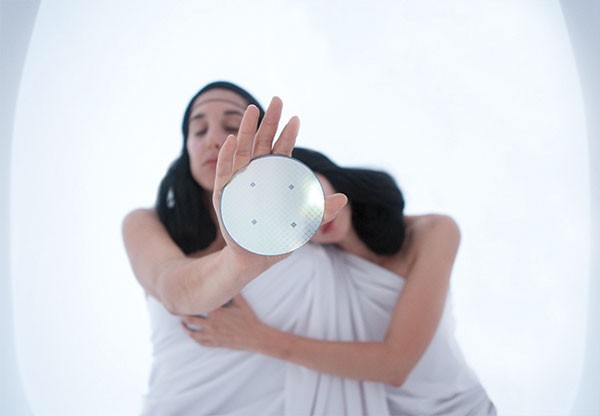When Nina Sarnelle was a student at Carnegie Mellon University, some of her classmates in the Master of Fine Arts program conceived the challenge of designing a work tailored to someone's home. "The idea was to bypass the gallery system," Sarnelle recalls.
She was a performance artist, intent on synthesizing various skills she had been honing since childhood (music, acting, poetry, video production, etc.). But Sarnelle found a way to complete the assignment.
Via Craigslist, she sought people willing to host a week-long "performance" in their home, then connected with a Squirrel Hill family with two moms trying to expose their three kids to a broad range of art. One of the moms worked at CMU and was familiar enough with MFA artists to trust Sarnelle with a key and allow her to enter the home at random times. As the family went about its routine, Sarnelle silently blended into the fixtures, looking like a gymnast-ninja in a black leotard and facemask. "It was grown-up hide-and-seek," she recalls. "Every day, they were like, ‘Where's Nina?'" One day, she huddled on top of the refrigerator. On another, she stood behind a shower curtain. (Once family members spotted her feet, they "usually" detoured to another bathroom, she says.) For the duration of a dinner party, she quietly laid at the center of a table beneath a tablecloth.
Wire-thin Sarnelle, who wears a crown of wispy black and dyed-blonde hair, tends to spring the quirky and unconventional on audiences, no matter how large or small. On Oct. 5, as part of the VIA New Media & Music Festival, she and fellow CMU grad Scott Andrew are staging a collaboration called group. It's a crowd-participation project in which the two will rope spectators into their takes on communal activities ranging from sing-alongs to corporate team-building exercises and cult initiations. Publicity materials for group are deliberately ambiguous, asking, "A therapy session? A yoga class? An electronic music show?"
"The idea is total control," says Andrew. "We will use every psychological trick to cue in people [to] what they're supposed to feel." This includes the subtle (blocking out the windows of Friendship's Alloy Studios to envelop the audience in the space) to the ostentatious (a giant inflatable shape to be pumped up during a deep-breathing exercise).
The expansive VIA is as close as the two artists have come to a venue in sync with their approach. More often, they slide the unusual through usual channels.
Take, for instance, Center for Autosexual Reproduction.
In 2011, developers of East Liberty's Bakery Square complex offered a space not yet ready for a business to artists (as self-conscious gentrifiers often do). Andrew and Sarnelle proposed turning the storefront into a mock clinic for a fictitious form of asexual childbearing.
"I think they assumed they'd just get the usual installation of paintings," says Sarnelle.
The artists outfitted the location as a clinic promising simply to "make you a child." If you visited during the few hours a week it was open, you entered a waiting room complete with brochures and a flat-screen TV playing an "infomercial." ("I don't have to worry about the pain. I don't have to worry about the mess, and the best part is it works!" says one smiling actress.) Then a "receptionist" (a CMU theater major) led you through a dark passageway into a coffin-sized space. A host of disembodied, latex-gloved hands would emerge from fixtures to poke and prod you. "Halfway through, there would be some kind of ‘emergency' and we would tell the person they would need to be reborn as the child they wanted," says Andrew. Cue a crawl down a tube meant to symbolize a birth canal, and then a "delivery" back to the parking lot. The center did promise to "make you a child," didn't it?
Their past projects could be experienced by only one person at a time. With group — co-presented with the Kelly-Strayhorn Theater's newMOVES dance festival — Sarnelle and Andrew seek to bring their approach to a crowd.
"The main thing we liked about it was the participatory component," says Mac Howison, a program officer at The Sprout Fund. Sprout contributed $5,000 to group and $1,000 to The Sisters of the Lattice, a 2012 multi-location performance piece in which Sarnelle and Agnes Bolt, another CMU art student, portrayed "willfully conjoined techno-mystics" wearing a single giant toga-like garment. (The nonprofit appreciated that Sarnelle filled out the application in character.)
group, Howison says, "actively pulls in audience members. ... Our goal with these kinds of grants is community engagement, and we've never seen a show like this, which so insistently demands its audience be a part of it."
















